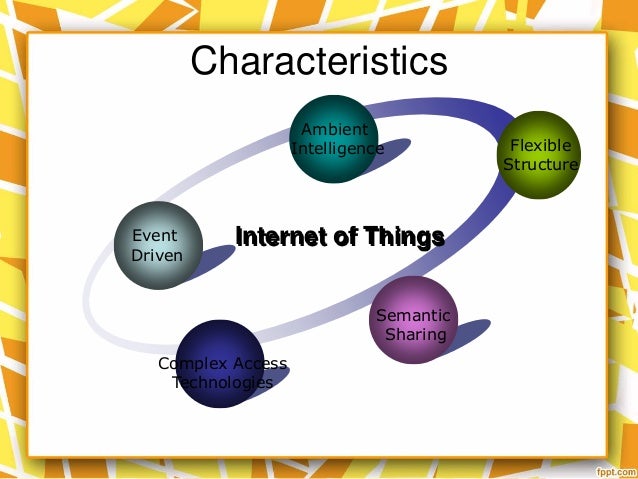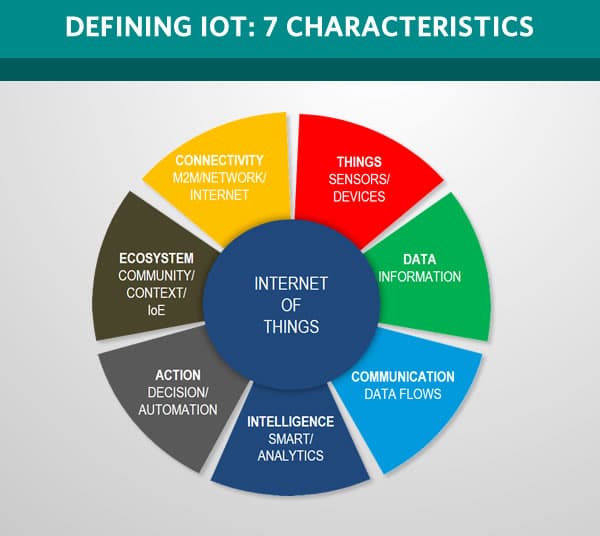characteristics of internet of things

Today, we want to tell you about the fascinating world of IoT or the “Internet of Things”. Have you heard of it? Essentially, it refers to the network of connected devices which can communicate with each other and carry out tasks without human intervention.
The Web of Things
One important aspect of IoT is the Web of Things (WoT) – a term coined by the W3C in 2014. WoT enables connected devices and services to be accessed and controlled via standardized interfaces. This helps to create interoperability between devices and makes it easier for developers to create applications and services that can work across different types of devices.

Characteristics of IoT Devices
If you’re wondering what exactly makes devices “IoT-ready”, here are some key characteristics that they should possess:
- Connectivity: IoT devices should be able to connect to the internet or other devices to receive and send data.
- Sensors: The ability to sense and respond to changes in the environment is another key characteristic of IoT devices, allowing them to collect important data and make decisions based on it.
- Processor: IoT devices need a processor to carry out their functions, and should be designed to minimize power consumption to extend battery life.
- Data Storage: IoT devices should be able to store the data that they collect, at least temporarily, to enable further analysis and processing.
- Security: Finally, cybersecurity measures should be taken to protect the devices from unauthorized access and prevent data breaches.

Defining IoT in 7 Characteristics
Another way to look at it is through Silvia Torres Carbonell’s seven characteristics of IoT:
- Sensors and Actuators: As we mentioned before, IoT devices should be able to collect data and perform actions based on that data.
- Connectivity: The ability to connect with other devices and the internet.
- Data Processing: IoT devices should be able to process the data that they collect and generate insights or take actions based on that data.
- Low Power: IoT devices often rely on batteries or other power sources, which should be designed to maximize efficiency and reduce battery drain.
- Cost-Efficiency: As IoT devices become more prevalent, they need to be affordable and cost-effective for widespread adoption
- Interoperability: Devices should be able to work with other devices and services using open standards.
- Security: As with any connected device, IoT devices should be secure to prevent unauthorized access and data breaches.

Abstract
The Internet of Things is an exciting and rapidly-growing field, with potential applications in everything from smart homes and cities to healthcare and industrial automation. IoT devices are characterized by their ability to connect, collect and process data, and perform actions based on that data. They are designed to be cost-effective, efficient, and interoperable with other devices and services. However, security remains a significant challenge for IoT, with devices often susceptible to hacking and unauthorized access. Nevertheless, the potential benefits of IoT make it a field worth watching and investing in.
Introduction
The term “Internet of Things” was first coined by Kevin Ashton in 1999, but it wasn’t until the early 2010s that it began to gain traction as a buzzword and field of study. IoT refers to the network of connected devices that can communicate with each other and perform actions based on data collected from their environment, without human intervention. This has the potential to revolutionize the way we live and work, with applications in everything from healthcare and agriculture to smart homes and cities.
At its core, IoT is about connectivity – the ability of devices to connect to each other and the internet to exchange data and collaborate. This requires a range of sensor and communication technologies, as well as data processing and storage capabilities. IoT devices also need to be energy-efficient, cost-effective, and secure, to enable wide-scale adoption and integration into existing systems.
Content
IoT has potential applications in numerous sectors and industries, and its growth is expected to accelerate in the coming years. In healthcare, IoT devices can monitor vital signs and blood glucose levels, track medication adherence, and alert healthcare providers in case of emergencies. Connected wearables and devices can also help with mobility and rehabilitation, with applications in physical therapy and sports medicine.
In agriculture, IoT can be used for precision farming and resource management, with sensors and drones measuring soil moisture, temperature, and other environmental variables to optimize crop yields and minimize waste. In the energy sector, IoT can enable smart grids and home automation, with devices automating energy consumption and production to minimize costs and reduce carbon emissions. In manufacturing, IoT can be used to optimize production processes and supply chains, improving efficiency and quality while reducing costs.
IoT also has potential applications in smart homes and cities, with connected devices automating routines and tasks, providing real-time information, and improving safety and security. Smart homes can use sensors and devices to monitor and adjust lighting, temperature, and other variables based on occupants’ preferences and schedules, while smart cities can use IoT to manage traffic, public transportation, energy consumption, and waste management more efficiently.
Conclusion
The Internet of Things is a rapidly-growing field with enormous potential and an increasingly important role in our lives and the economy. As connected devices become more prevalent and sophisticated, they have the potential to improve everything from healthcare and agriculture to energy and manufacturing. However, as with any connected technology, security remains a significant challenge, with the risk of hacking and data breaches. Nevertheless, the potential benefits of IoT make it a field worth investing in, and we can expect to see further growth and innovation in the coming years.

Source image : www.researchgate.net

Source image : silviatorrescarbonell.blogspot.com

Source image : www.slideshare.net


